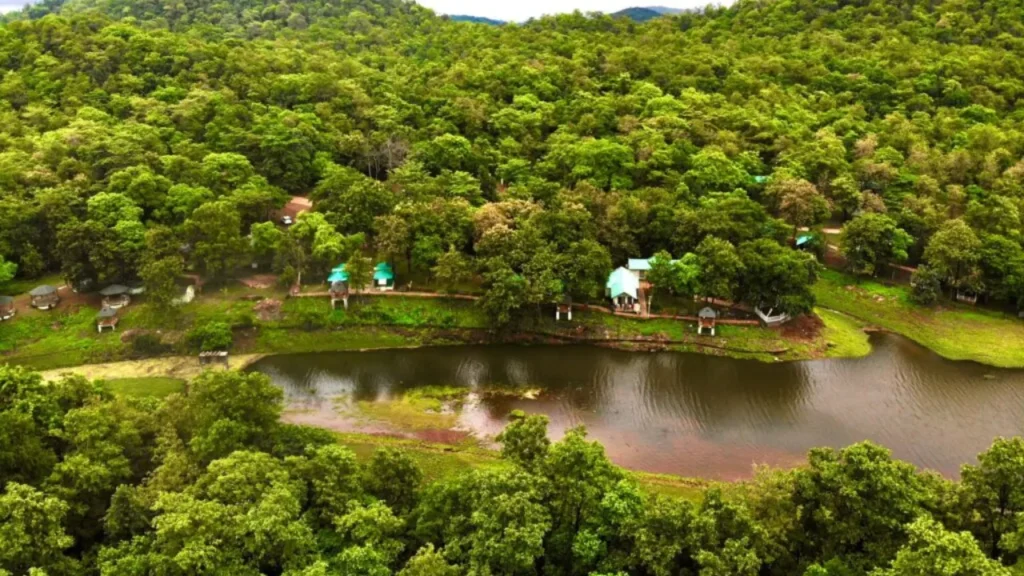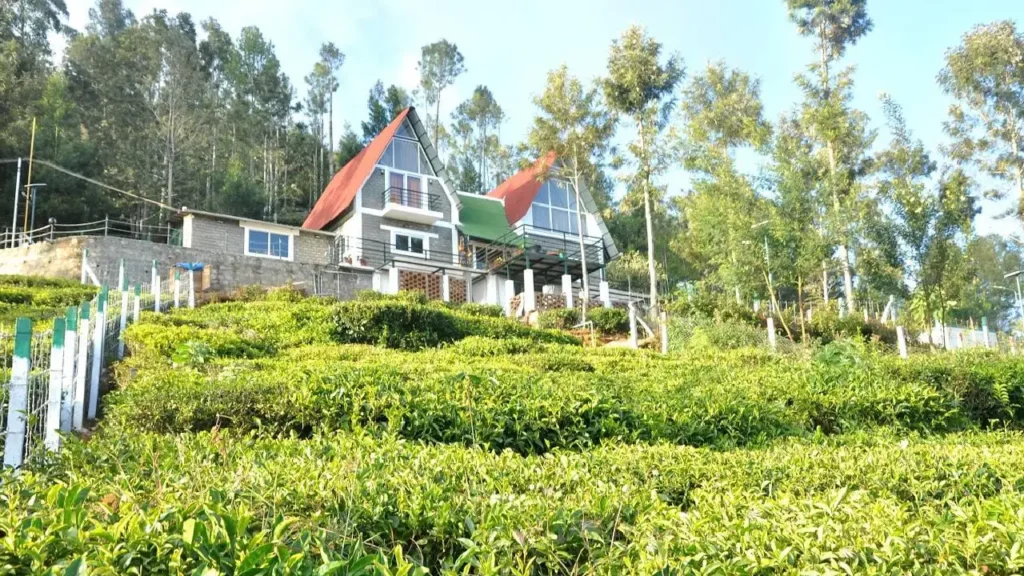When I first started my homestay in the hills of Himachal, I never realized that adding a few medicinal plants could change not just the look of my space but also the experience of my guests. Over time, I noticed guests loved the idea of sipping tulsi tea from the garden, rubbing aloe vera on sunburns, or taking a sprig of lemongrass for their evening brew. It added warmth, authenticity, and a connection to nature that hotels can’t replicate.
India, with its ancient Ayurvedic heritage, is home to thousands of medicinal plants that can thrive in diverse climates – from the coastal humidity of Kerala to the dry air of Rajasthan. Growing them around a homestay isn’t just about aesthetics – it’s about offering wellness, sustainability, and storytelling.
Here are 15 medicinal plants I recommend for anyone running a homestay in India. These plants are easy to grow, practical to maintain, and valuable both for personal use and for enhancing the guest experience.
Table of Contents
1. Tulsi (Holy Basil) – The Everyday Healer
No Indian home is complete without a Tulsi plant. In my courtyard, it’s the first thing guests notice, often with curiosity.
Medicinal Benefits: Tulsi is known for its ability to boost immunity, reduce stress, and combat infections. Its leaves are anti-inflammatory and rich in antioxidants.
How to Grow: It thrives in sunlight and needs moderate watering. A single plant can grow into a healthy bush with regular trimming.
Tip: Keep a pot near the entrance or balcony – its mild aroma naturally purifies the air.
2. Aloe Vera – The Skin Doctor
Guests at my homestay once had sunburns after trekking, and a little aloe gel from my garden was a life-saver.
Medicinal Benefits: Aloe Vera soothes burns, hydrates skin, improves digestion, and reduces acne.
How to Grow: It loves dry, warm climates and needs minimal water – perfect for low-maintenance gardeners.
Tip: Use fresh gel directly on skin or mix with rose water to create a natural moisturizer for guests.
3. Lemongrass – The Natural Insect Repellent
Whenever guests sit in my open dining area, I light lemongrass oil to keep mosquitoes away.
Medicinal Benefits: Lemongrass is a natural detoxifier, aids digestion, and helps relieve anxiety.
How to Grow: Plant clumps in a sunny area with moist soil. It spreads fast and smells divine.
Tip: Use fresh leaves in herbal teas or as garnish in soups – your guests will love the aroma.
4. Mint (Pudina) – The Cooling Companion
I remember one summer afternoon when a traveler asked for a refreshing drink, and we made fresh mint lemonade straight from the garden – it became a hit.
Medicinal Benefits: Mint aids digestion, cools the body, and helps relieve headaches and nausea.
How to Grow: Extremely easy! It thrives in partial sunlight and grows well in pots.
Tip: Trim regularly to avoid overgrowth and use leaves for teas, chutneys, or infused water.
5. Turmeric (Haldi) – The Golden Healer
Turmeric is more than a spice; it’s a miracle root. I started growing it in a small patch behind my kitchen – it’s easy and rewarding.
Medicinal Benefits: Anti-inflammatory, antioxidant, and known for healing wounds and improving immunity.
How to Grow: Needs warm temperatures and well-drained soil. Harvest the rhizomes after 8–10 months.
Tip: Offer your guests “haldi milk” at night – it’s a comforting Ayurvedic ritual they’ll never forget.
6. Neem – The Natural Detoxifier
In Rajasthan, I once stayed at a homestay where neem leaves were used to purify water and repel insects naturally. I planted one soon after.
Medicinal Benefits: Neem is antibacterial, antifungal, and excellent for skin, hair, and dental care.
How to Grow: It grows into a hardy tree and needs full sunlight. It’s drought-resistant and low-maintenance.
Tip: Use neem twigs as eco-friendly toothbrushes or make neem oil sprays for garden pest control.
7. Ashwagandha – The Stress Reliever
I discovered Ashwagandha while staying at a yoga retreat near Rishikesh – they brewed it into calming herbal teas.
Medicinal Benefits: Reduces stress, boosts stamina, balances hormones, and strengthens immunity.
How to Grow: Grows best in sandy soil and warm climates. Harvest roots after six months.
Tip: Dry and powder the roots; offer it as part of your homestay’s wellness tea blend.

8. Brahmi – The Brain Booster
During monsoons in Goa, I saw homestay owners grow Brahmi along pond edges. It fascinated me because it’s so lush and vibrant.
Medicinal Benefits: Enhances memory, reduces anxiety, and supports cognitive health.
How to Grow: Prefers moist soil and partial shade – ideal near ponds or in pots with regular watering.
Tip: Blend Brahmi leaves into smoothies or herbal drinks for guests seeking a wellness boost.
9. Ginger – The Digestive Aid
My kitchen garden always has fresh ginger – it’s the backbone of Indian hospitality.
Medicinal Benefits: Aids digestion, relieves nausea, and fights colds.
How to Grow: Plant rhizomes in warm, shady spots with rich soil. Keep it moist but not waterlogged.
Tip: Serve fresh ginger tea to guests during chilly mornings – it’s soothing and rejuvenating.
10. Curry Leaves – The Flavor and Health Combo
No South Indian homestay is complete without curry leaves. When I visited a homestay in Tamil Nadu, they grew them by the entrance – it smelled heavenly.
Medicinal Benefits: Improves digestion, controls cholesterol, and is rich in antioxidants.
How to Grow: Needs sunlight and regular pruning. Plant it in well-drained soil.
Tip: Add fresh leaves to your breakfast menu – guests appreciate the authenticity of garden-to-table food.
11. Giloy (Guduchi) – The Immunity Climber
After the pandemic, Giloy became a household name. I started growing it on a trellis near my verandah—it climbs beautifully.
Medicinal Benefits: Strengthens immunity, treats fever, and improves metabolism.
How to Grow: A hardy climber that thrives in sunlight. Needs minimal maintenance.
Tip: Boil stems to make Giloy tea for guests – it’s detoxifying and soothing.
12. Marigold (Genda) – The Healer in Disguise
Most guests think marigold is purely decorative until I tell them it’s medicinal too.
Medicinal Benefits: Anti-inflammatory and antiseptic; helps heal wounds and skin irritations.
How to Grow: Thrives in sunny locations with moderate watering. Very beginner-friendly.
Tip: Use petals in salads, herbal oils, or even natural soaps made for guests.
13. Coriander (Dhania) – The Dual-Purpose Herb
I started growing coriander simply for cooking, but I soon realized its health value.
Medicinal Benefits: Helps digestion, detoxifies heavy metals, and regulates blood sugar.
How to Grow: Quick to grow from seeds and ready to harvest in 3–4 weeks.
Tip: Offer guests freshly chopped coriander in meals – they’ll instantly notice the flavor difference.
14. Lavender – The Aromatic Stress Buster
In my travels through Sikkim and Uttarakhand, I noticed homestays that smelled like calm – lavender was the secret.
Medicinal Benefits: Reduces anxiety, promotes sleep, and heals minor cuts.
How to Grow: Needs full sun, well-drained soil, and little water. Ideal for hills and dry regions.
Tip: Dry the flowers for potpourri sachets or make lavender-infused oil for guest rooms.
15. Tulsi, Aloe & Lemongrass Combo Garden – The Perfect Trio
I call this my “wellness corner.” These three plants together create an ecosystem that looks lush, smells good, and keeps pests away.
Why it works: Tulsi purifies the air, aloe soothes the skin, and lemongrass keeps insects at bay.
How to Grow: Plant in adjoining pots or a shared patch near your common area.
Tip: Label each plant with its local and scientific name – guests love reading about their benefits.
Creating a Medicinal Garden Around Your Homestay
When I began landscaping my homestay, I didn’t want a generic lawn. I wanted purpose. Medicinal plants gave my space life, health, and identity. Here’s how you can do it too:
- Design for Interaction: Place herbs near the kitchen, flowers near the entrance, and climbers on fences. Guests enjoy touching, smelling, and learning.
- Label Everything: Use wooden or metal tags to name each plant. Add short notes – like “good for cough” or “skin care.” It’s educational and engaging.
- Use Local Varieties: Ask local nurseries for native herbs – they’re more resilient and connect your guests to the local ecosystem.
- Harvest Mindfully: Never overharvest. Keep plants healthy by pruning gently and using compost instead of chemicals.
- Host Mini Workshops: Teach guests how to make herbal teas, skin packs, or oils from your garden. These experiences create memories and good reviews.
Bonus: Pairing Your Medicinal Garden with Guest Experiences
One thing I’ve learned from running my homestay is that guests crave experiences, not just rooms. Your medicinal garden can become a talking point, a signature of your hospitality.
Here are a few ideas I’ve tried (and you can too):
- Morning Herbal Tea Walk: Invite guests to pluck fresh lemongrass, tulsi, and mint leaves and brew tea together.
- DIY Skincare Session: Use aloe vera, turmeric, and neem to make natural face packs.
- Cooking Class: Teach how to use coriander, curry leaves, and turmeric in local recipes.
- Eco Wellness Gift: Give guests small potted herbs (like mint or tulsi) as take-home souvenirs.
These gestures add value and create deeper connections between your guests and the local culture.
Practical Considerations Before You Plant
- Soil Preparation: Most herbs prefer loose, well-drained soil with organic compost.
- Sunlight: 4–6 hours of direct sunlight daily works best for medicinal plants.
- Watering: Don’t overwater – roots rot easily.
- Pest Management: Use neem oil sprays or companion planting (like marigold) instead of chemicals.
- Maintenance Schedule: Spend 15–20 minutes daily trimming and checking plants.
Estimated Setup Cost for a Small Medicinal Garden
| Item | Approx. Cost (INR) |
|---|---|
| 15–20 saplings (mixed herbs) | 1,500 – 2,500 |
| Pots, compost, soil | 2,000 – 3,000 |
| Labels, small fencing | 1,000 – 2,000 |
| Tools & watering can | 1,000 |
| Total Estimated Cost | ₹5,000 – ₹8,500 |
A small investment, but it completely transforms the energy and aesthetics of your homestay.

Conclusion: Growing Wellness, Not Just Plants
When I sit in my garden at sunset, sipping tulsi-mint tea and listening to guests share their travel stories, I realize how these plants have changed the soul of my place. What started as an experiment to beautify my homestay has become a living symbol of wellness, sustainability, and Indian tradition.
Each of these 15 medicinal plants carries centuries of wisdom – from Ayurveda to folk remedies – and when we grow them near our homes or homestays, we become part of that legacy. Whether it’s soothing aloe on tired skin, ginger in warm tea, or neem protecting your garden, these plants are gentle companions on every journey.
So, if you’re building a homestay, don’t just think of furniture and décor – think of your garden as the heart of your hospitality. A few pots of healing herbs can turn an ordinary stay into a meaningful experience. After all, in India, true luxury is not found in marble halls – it’s in the fragrance of tulsi at dawn, the taste of lemongrass in your tea, and the comfort of nature’s quiet care. 🌿




